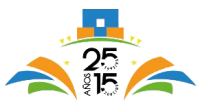A MACHINE LEARNING APPROACH TO VALIDATE THE EYEGLASS PRESCRIPTION OF A HANDHELD, LOW-COST ABERROMETER

| AUTHORS / CAREER / CENTER | Carlos S. Hernandez / Master in Big Data Analytics / Universidad Carlos III de Madrid |
| SUPERVISOR | Eduardo Lage, PhD, Universidad Autonoma de Madrid |
| TYPE | Master Thesis |
| ABSTRACT | Motivation: A large percentage of world population suffers poor vision that can be easily corrected with eyeglasses. These vision problems are especially problematic in low-resource settings like China or India where trained eye care professionals or automated devices that prescribe eyeglasses are not readily available. Uncorrected refractive errors can lead to severe visual impairment and even blindness if not properly treated. Problem Statement: The QuickSee is a low-cost aberrometer developed by Plenoptika Inc. (Massachusetts; USA) for helping people with uncorrected refractive errors in developing countries. The device is designed to be easy-to-use (minimum training required) and with no posterior subjective refining. The objective of this work is to predict when the final eyeglass prescription provided by the device will be outside an acceptable error range (∆M ≤ 0.5D or ∆M ≤ 0.75D) using machine learning algorithms.Approach: Data used for machine learning is a set of wavefront videos (702.57 GB) from 755 patients enrolled in a clinical study carried out in India in 2015 to validate accuracy of the QuickSee. The machine learning estimators trained and tested were: K- Nearest Neighbors, Random Forests, Gradient Boosting, and Support Vector Machines. Class distribution of the dataset is unbalanced because we are trying to predict outliers, which are rare events. Results: The results showed that the models fail to predict the outliers when the threshold was set using ∆M ≤ 0.5D. However, on the class distribution generated using ∆M ≤ 0.75D classifiers displayed a better performance. The classifier with the best throughput was Random Forest Classifier that was able to correctly classify 55% of the outliers. Conclusions: Employing a Random Forest Classifier and an error margin of ∆M ≤ 0.75D, we were able to increase the reliability of the QuickSee up to 95%. Key Words: autorefractors, QuickSee, machine learning, refractive errors, power vectors, |
| LINK | Confidential content |



